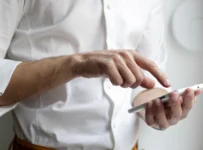
In today’s interconnected world, our smartphones have become indispensable tools for communication and sharing experiences with friends and family. However, there’s nothing more frustrating than trying to send a cherished photo only to be met with an error message or a seemingly endless loading circle. “Why is my phone not sending pictures?” This question plagues smartphone users worldwide, and in this comprehensive guide, we aim to demystify the common causes behind this issue and provide practical solutions to get those pictures flying across the digital highway once more. Whether you’re struggling with poor connectivity, file format woes, or app-related glitches, we’ve got you covered with expert advice and step-by-step troubleshooting. Say goodbye to picture-sending headaches as we unravel the secrets to smooth digital sharing.
Why Is My Phone Not Sending Pictures?
Your phone may not send pictures due to several common reasons, including poor internet connectivity, large file sizes, outdated apps or software, insufficient storage space, and network restrictions. To resolve the issue, ensure a stable internet connection, resize or convert images if needed, update apps and software, free up storage space, and check network settings. Follow our troubleshooting guide for step-by-step solutions to get your picture-sharing back on track.
Common Causes Of Picture Sending Issues
Common causes of picture-sending issues on your phone include:
- Poor Internet Connection: A weak Wi-Fi or mobile data connection can hinder picture sending.
- File Size And Format: Large image files or unsupported formats may cause problems.
- Software And App Issues: Outdated apps or software can lead to sending failures.
- Storage Space: Low storage space on your device can impact picture sending.
- Network Restrictions: Firewall settings or network restrictions can block picture sending.
How To Update Apps And Troubleshoot App-Specific Issues?
To update apps and troubleshoot app-specific issues on your smartphone, follow these steps:
Updating Apps:
- Open the App Store (iOS) or Google Play Store (Android) on your device.
- Tap on your profile icon or the menu button (usually represented by three lines).
- Select “My apps” or “My apps & games.”
- Find the app you want to update and tap the “Update” button next to it.
- Alternatively, you can tap “Update all” to update all apps.
Troubleshooting App-Specific Issues:
- Restart The App: Close the app completely and reopen it to see if the issue persists.
- Clear App Cache (Android): Go to Settings > Apps > [App Name] > Storage > Clear Cache.
- Force Stop (Android): In the same menu as above, tap “Force Stop” and then reopen the app.
- Check For App Updates: Sometimes, app-specific issues are resolved in-app updates. Make sure you have the latest version installed.
- Disable And Enable (Android): If an app is misbehaving, you can try disabling it and then re-enabling it.
- Reinstall The App: If all else fails, uninstall the app and reinstall it from the app store.
Additional Tips And Tricks
Here are some additional tips and tricks to optimize picture sending on your smartphone:
- Use Cloud Storage: Consider using cloud storage services like Google Drive, Dropbox, or iCloud to store and share pictures. This reduces the need to send large files directly through messaging apps or email.
- Clear Cache And Data: Periodically clear the cache and data of messaging and social media apps to improve their performance and resolve any glitches.
- Restart Your Device: A simple restart can fix many temporary issues with your phone’s functions, including picture sending.
- Enable Automatic Updates: Set your apps to update automatically to ensure you have the latest versions with bug fixes and improvements.
- Use Data-Saving Modes: Some apps offer data-saving modes that can help reduce the size of media files you send, making it easier to share them.
- Delete Unnecessary Apps: Regularly review and uninstall unused apps to free up storage space on your device.
- Monitor Data Usage: Keep an eye on your data usage to avoid unexpected overage charges, especially when sending pictures over mobile data.
- Check Network Signal: Ensure you have a strong cellular signal or Wi-Fi connection before attempting to send pictures, as a weak signal can lead to failures.
- Update Your Operating System: Keeping your device’s operating system up-to-date can resolve compatibility issues that may affect picture sending.
- Use Third-Party Messaging Apps: Consider using third-party messaging apps like WhatsApp or Telegram, as they often have better image compression and sharing capabilities than standard SMS/MMS. By implementing these tips and tricks, you can enhance your picture-sharing experience and reduce the likelihood of encountering issues on your smartphone.
When To Seek Professional Help?
Knowing when to seek professional help for persistent issues with your phone not sending pictures is crucial. Here are scenarios in which it’s advisable to seek assistance:
- Persistent Software Problems: If you’ve tried all troubleshooting steps, including updating apps and your operating system, but the issue persists, it may require a professional diagnosis.
- Hardware Issues: If you suspect hardware problems, such as a faulty camera or a damaged port, a technician or repair specialist should inspect your device.
- Network Provider Assistance: If the issue seems related to your mobile network or you’re experiencing consistent MMS (Multimedia Messaging Service) failures, contact your mobile network provider for guidance.
- Complex Settings Configuration: Some picture-sending problems may be related to complex network or device settings. Seek assistance if you’re not comfortable navigating these settings.
- Security Concerns: If you suspect your phone’s security has been compromised or if you’re unable to send pictures due to security-related restrictions, consult with a professional to assess and address any potential security threats.
- Data Recovery: If you need to recover lost pictures or data after troubleshooting, professional data recovery services may be necessary.
- Manufacturer Or App Support: Contact the manufacturer’s customer support or the app developer’s support team for issues specific to their software or hardware.
Conclusion
In conclusion, resolving the vexing question of “Why is my phone not sending pictures?” often requires a combination of troubleshooting, patience, and a good understanding of common issues. By addressing poor connectivity, managing file formats, keeping apps updated, maintaining ample storage space, and adjusting network settings, you can overcome most picture-sending challenges. Remember to explore additional tips and seek professional help when needed. With these strategies in your toolkit, you’ll be well-equipped to enjoy seamless picture sharing, fostering better connections with friends and family in our digitally connected world.
FAQ’s
Why Do My Pictures Take A Long Time To Send?
A slow internet connection or a large file size can cause delays. Ensure a strong connection and consider resizing images.
Why Won’t Pictures Send Via Text (MMS)?
Check if MMS is enabled in your messaging settings. Ensure you have mobile data or Wi-Fi when sending MMS.
Why Can’t I Send Pictures On WhatsApp?
Update WhatsApp to the latest version. If the issue persists, check app permissions and network connectivity.
How Do I Fix “Message Not Sent” Errors When Sending Pictures?
Verify internet connectivity, ensure you have enough storage space, and try restarting your device or messaging app.
Why Do Pictures Sent Via Email Not Reach The Recipient?
Double-check the recipient’s email address, attachment size limits, and your email app settings. Ensure you have an active internet connection.


